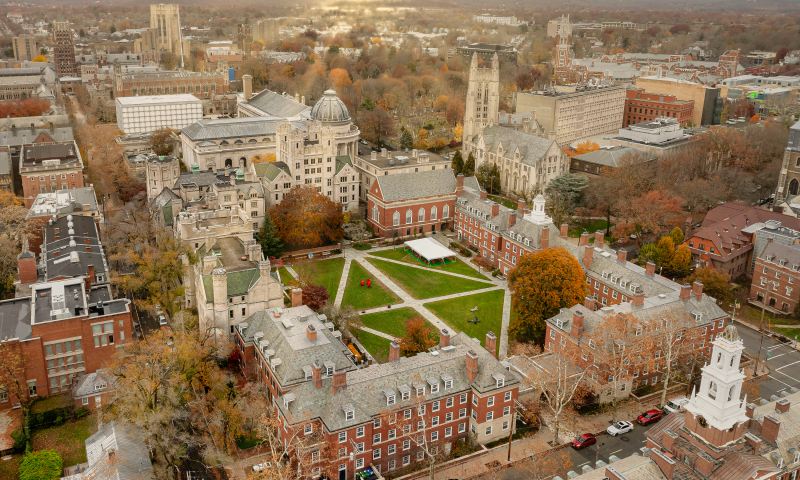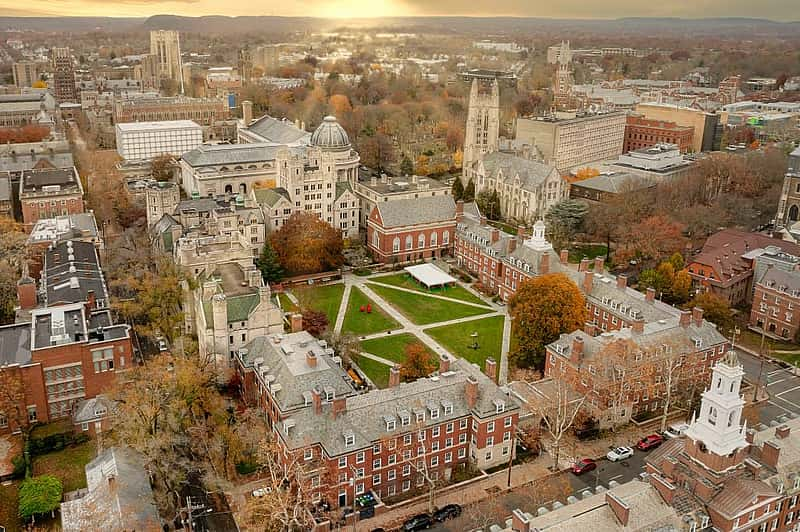
Understanding Small vs. Medium vs. Large Colleges
When searching for best-fit colleges, size is often one of the first things that students consider. Many college-bound students already have an idea of what they’re looking for in a school before they start researching specific institutions. Maybe they prefer a large student body with endless possibilities, like what you find at public research universities. Perhaps a small campus with an intimate atmosphere is preferable — a characteristic of many private colleges. Going with your gut is a good place to start, but there are many pros and cons to certain college sizes that students might overlook when building their balanced college list.
Why Does Campus Size Matter?
When choosing best-fit colleges, the size of the campus can do a lot to directly impact everything from the school’s academic programs to the campus’ social climate. A college with 2,000 undergraduates is not going to offer hundreds of majors, but you might get more advisory support once you get on campus. On the flip side, a larger university can offer almost endless academic opportunities, but you’ll need to be more independent, as a higher volume of students can leave faculty and staff with little time to get to know every student extremely well.
Because admissions officers are working to build a well-rounded class of incoming students every application season, how students’ goals and ambitions fit onto that campus is taken very seriously. If a student is looking for a highly specific major and a campus experience with unlimited clubs, a smaller campus with more limited academic offerings and a first-year class size of about 600 isn’t going to meet that student’s goals. That’s why it’s important to consider social fit along with academic and financial fit when selecting colleges to which to apply — you want to ensure that you’ll have the best possible school experience.
What Size College Is Right for You?
First, picture yourself at your “dream” college. Is it a sprawling campus with thousands of students milling about every day? Or is it a cozier atmosphere, with a quieter campus and familiar faces everywhere? Or is it somewhere in between? How you picture the campus around you can tell you a lot about what you’re looking for in terms of size.
Next, think about what you want to study. Are you interested in a liberal arts education? Do you have a more specific major in mind, like business, engineering, foreign language, etc.? Do you want to study a specific major but also want the freedom to pursue other academic interests? Your academic goals can also play a part in size: larger institutions tend to have more academic offerings, while smaller colleges might be limited in what majors and courses you can take.
Learn how to research a college effectively.
What Are the Different Sizes of Colleges?
This chart below, comparing small, medium, and large college campuses sizes can help you get a better idea of the types of colleges that might be a good fit for you.
|
Small College |
Medium College |
Large College |
|
| Student Body Size | <5,000 Undergrads | 5,000-15,000 Undergrads | >15,000 Undergrads |
| Academic Offerings | Small colleges might have limited academic offerings with more focus on liberal arts or a specialty, like STEM. | Students have more academic options than at a smaller college, but not as many as at a large university — can sometimes have a strong liberal arts focus. | Large colleges offer a wide range of academic majors and research opportunities. |
| Class Size | Class sizes tend to be smaller, but there are larger classes on occasion. | Students typically take a mix of large and small classes — class sizes get smaller as students get into higher-level, major-specific courses. | Students will find large, auditorium-style general education classes, with small classes in higher-level, major-specific courses. |
| Activities | Small colleges usually offer fewer clubs and activities, but a smaller student body can give students more influence to start their own clubs or activities. | Students will find a wide range of clubs and activities that meet their interests, with room to grow. | Large colleges offer hundreds of clubs and activities to meet any student’s interests, which can be overwhelming for some. |
| Social Climate | Students on smaller campuses can usually get to know each other better, and a smaller student body can help you stand out. Students can feel like a big fish in a small pond — a good option for students who want a more intimate college experience with a smaller group of students. | A medium-size student body can be small enough to create an intimate experience, but also big enough to keep meeting new people. This is a good option for students who want the experience of a smaller campus but more opportunities to branch out like in a larger university. | Large student bodies are sometimes not as intimate. Students can feel like a little fish in a big pond. But on a large campus, you’re always meeting someone new. A good option for students who want an experience that’s different every day. Students on large campuses who want a more intimate experience tend to find it within their major, or a club, group, or activity they’re passionate about. |
How Does College Size Relate to Class Size?
It’s important to consider your own learning preferences and priorities when evaluating the importance of class size in your college selection process. That said, class size does not always correlate to the size of the student body, so you may find it helpful to research the average class size and student-to-faculty ratio for the schools that interest you.
Larger institutions — which are often public colleges — tend to have more resources, including larger lecture halls and facilities, which can accommodate more students in a single class. Smaller colleges may have limited resources and smaller facilities, leading to smaller class sizes. However, there are exceptions. The size of classes can also depend on the specific program or major within a college. For example, introductory classes in large universities may have larger class sizes, while upper-level or specialized courses may have fewer students, regardless of the overall college size.
The demand for certain programs or majors can also impact class sizes. Popular programs may have larger classes due to a higher number of students enrolling in those courses. Some colleges prioritize small class sizes to foster more personalized interactions between students and faculty, promoting better engagement and understanding. Liberal arts colleges often emphasize smaller class sizes and more interaction between students and professors. Research universities, on the other hand, may have a mix of large lectures and smaller discussion groups.
Does the Size of a College Determine the Activities Offered?
Different sizes and types of colleges offer varying numbers of opportunities. Generally, the higher the student population, the more diverse the extracurricular activities and social opportunities. The benefit of this is that you’re sure to find some that suit your interests, either academically or personally. However, the hundreds — or even thousands — of options offered at larger schools may be overwhelming. There are often many clubs centered around the same interest.
Medium-sized colleges and universities typically offer a wide variety of clubs and activities. Though you won’t find as many options as you would at a larger school, there’s a good chance you will still find activities that are a great fit. If you discover an unmet need, you can always start your own club. Most schools offer resources and support for new student organizations.
Do Smaller Schools Offer Fewer Clubs Than Larger Colleges?
Smaller schools typically offer fewer extracurricular activities than medium and large colleges and universities. It’s likely you will still find something that appeals to you, but you may also find more opportunities to start new clubs or activities that will help you craft the college experience you want. A smaller student body means you can make more of an impact — even if you don’t establish a new club or activity, you may find great opportunities to take on leadership roles or manage events or projects.
Ivy League Schools Compared by Size
Thinking of applying to an Ivy League school? Let’s look at size in terms of the undergraduate population, though it’s important to recognize that graduate and professional schools contribute to the overall student body size. Columbia University, for example, has significantly more graduate students than undergraduates, while Dartmouth College is focused on undergraduate education and has few graduate students.
|
Size |
Class Size |
Activities |
Location |
|
| Brown University | Medium | Most classes have fewer than 20 students. | 500+ | Providence, RI |
| Columbia University | Medium | Most classes have fewer than 20 students. | 500+ | New York City, NY |
| Cornell University | Large | Cornell offers a mix of class sizes, with 67% having fewer than 30 students. | 1,000+ | Ithaca, NY |
| Dartmouth College | Small | Most classes have fewer than 20 students. | 160+ | Hanover, NH |
| Harvard University | Medium | Introductory and popular courses have large enrollments — the median class size is 12 students. | 500+ | Cambridge, MA |
| University of Pennsylvania | Medium | Introductory classes have larger enrollments, but most classes have fewer than 20 students. | 600+ | Philadelphia, PA |
| Princeton University | Medium | Most classes are small — even larger courses have no more than 30-40 students. | 300+ | Princeton, NJ |
| Yale University | Medium | Most classes have fewer than 20 students. | 200+ | New Haven, CT |
While size isn’t the most important factor to consider when building your balanced list, it is one of many details that can influence your decision about whether to submit your college application to certain schools. When building your balanced college list, look up the student body size and consider how that fits into your needs, goals, and what you want out of your college experience.
Want some more advice on building your college list? IvyWise counselor Meg offers some insights:


